“Hey, I was just wondering what the major differences were between the ODAC and the OL DAC.”
This fine question continues to pop up in emails, on the phone, on reddit, on Head-Fi, etc.
I was excited to push OL DAC into the wild last November for a number of reasons. I’ve always placed great trust in JDS Labs customers, finding them to be knowledgeable value hunters, and OL DAC set a new bar. Alas, we omitted too many details at release, like why we created another transparent DAC in the first place. Rumors took off. My favorite assumptions include:
- ODAC and OL DAC are the same circuit in different boxes (False)
- OL DAC costs less, so performance must be lower (False)
In short, the DACs share few similarities, aside from comparable transparency.
| ODAC | OL DAC | |
| DAC IC | PCM5102A | AK4490EQ |
| Powered By | USB | AC Adapter |
| USB Input | YES | YES |
| TOSLINK Input | NO | YES |
| Configurable Filters | NO | YES |
OL DAC clearly has the upper hand in terms of performance.:
| SPECIFICATIONS | ODAC RevB | OL DAC |
| Frequency Response | +/- 0.04 dB | +/- 0.15 dB |
| THD+N, 20-20kHz | < 0.0029 % | < 0.0010 % |
| Noise, A-Weighted | -103 dBu | -109 dBu |
| Dynamic Range (A-Weighted) | > 112 dB | > 114 dB |
| Crosstalk @ 1kHz, -10dBFS (RCA) | -86.4 dB | -108 dB |
| Sum of Jitter Components @ 11025 Hz | -112.3 dB | -116 dB |
| IMD CCIF, -6.03 dBFS, 19/20kHz, 24/96k | 0.0015% | 0.00033% |
| IMD SMPTE -2VRMS, 24/96k | 0.0015% | 0.00031% |
| Linearity @ -90dBFS | -0.08 dB | +/- 0.01 dB |
THD+N Sweep (24/96kHz, 20-20kHz)
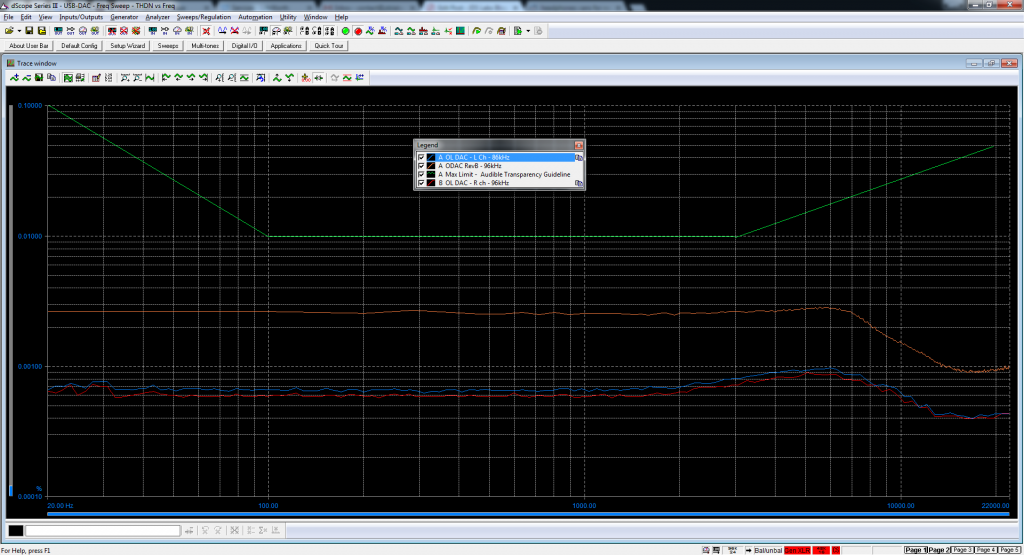
Noise, A-Weighted
Frequency Response (24/96kHz, 20-20kHz)
IMD CCIF
IMD SMPTE
Linearity
USB Jitter @ 11025Hz
Crosstalk
Why Another Transparent DAC?
ODAC was interesting five years ago for its claim of transparency at only $149. DAC performance and features improve every year; OL DAC is the logical successor. While there’s no need for “greater transparency”, few can argue with getting more for less.
There remains one potential advantage to choose a Standalone ODAC–running from USB power can be useful in certain scenarios. Thus, we decided to maintain ODAC and OL DAC concurrently. Confusing? Yes, sorry about that.

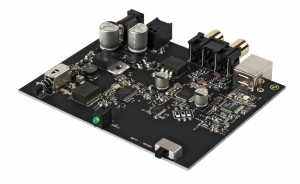
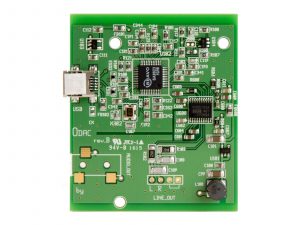

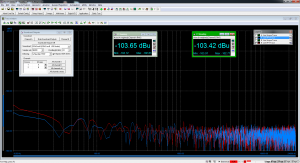
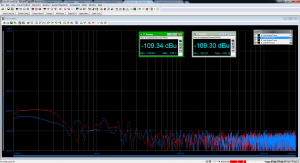
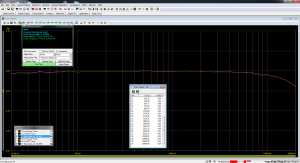
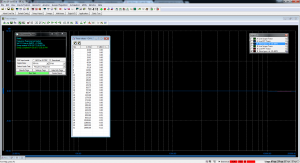
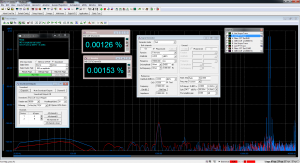
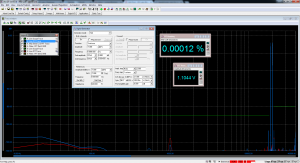
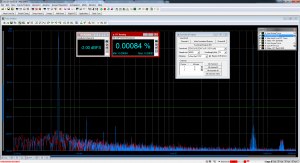
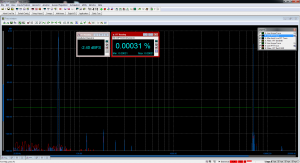
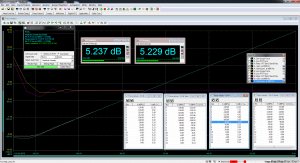

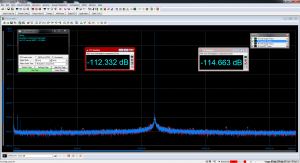
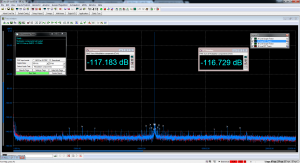
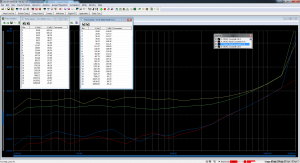
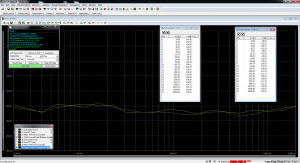
Hello,
Thanks for a great post! Does OL (or EL) DAC offer headroom for intersample peaks (https://benchmarkmedia.com/blogs/application_notes/intersample-overs-in-cd-recordings)? Have you performed any corresponding measurements?
Thanks for the link! I’ve observed this behavior before, and like Benchmark writes, it happens with every D/A chip.
With such high dynamic range performance of today’s DACs, a simple solution is to reduce PC volume slightly to increase interpolation headroom. I commend Benchmark’s implementation of an external interpolator. That’s certainly a nice feature. To answer your question, no, I think Benchmark is the only manufacturer with such technology. Also note that of all six example tracks, the worst case peaks were +1.49dBFS; most were about +0.5dBFS. It would be interesting to study a wide range of music to determine just how often peaks in excess of 0dBFS occur (quite rarely?).
Again, I’ve advocated setting OS volume below 100% for years now!
Thanks for the reply! But I guess for DACs that are USB Audio compliant and declare volume control support, adjusting the volume on the OS side is actually applied on the DAC board itself in the analog domain after the signal leaves the DAC chip. You probably need to reduce the volume in the audio player instead to make sure it happens in the digital domain before the bits of the signal go into the DAC chip.
Is that correct? I always wanted to confirm this with anyone who actually makes DACs 🙂
Yes, I believe you’re correct. The idea is to ensure volume is adjusted in the digital domain, before reaching the D/A converter. Adjusting at the app level is a good approach.
This will depend on how the digital volume control is implemented. 32-bit ESS chips attenuate before filtering (before both oversampling and ASRC). 24-bit Wolfson chips that have attenuation control also apply it before filtering. If the hardware designer doesn’t use the DAC’s on-chip filtering and does some other DSP beforehand, then the problem arises again of course.
Hey there, a traumatic and ill-timed electrical storm took my dear, beloved RME UFX from me and, though a replacement audio interface is a long way off, life without music simply will not do. A standalone DAC: clear, unintrusive and honest, must now take precedence over trifles like food and creditors. The OL DAC or a similar (albeit inferior) spec’ed AK4490 unit might fit the bill perfectly.
Please forgive me if this tangent comes off as either ignorant or rude (or both), it’s genuinely not intended as such and I’d love to buy though I do have some concerns which I hope can first be rendered obsolete. Upon further research I was dismayed to read posts here and in the instructions recommending lowering digital output sources to prevent potential intersample overs due, theoretically, to sloppy interpolation design. It’s very disconcerting for me to think that an issue as fundamental to the way any oversampling DA design works would have simply been overlooked by an “audiophile” company like AKM. Leaving such a blatant vulnerability to an increasingly common use case (consider how often modern volume-war-style mastering will leave 7, 8 or even more samples in a row FS) seems so sophomoric and amatuer that one can’t help but wonder what other maths were left misunderstood or improperly implemented. Passing this problem on to the end user is unnerving, unprofessional and, despite all my other concerns, this is the only one that is truly a deal breaker.
I, like many in the PC audio world, have worked very hard to maintain a bit perfect signal from storage to output despite Windows’ incessant attempts to interfere (for my convenience, of course). Additionally, I don’t want to truncate my samples and lower my bit depth, especially given that I often play 16bit files and 96dB is already a bottleneck compared to the 4490’s theoretical capabilities – capabilities that still appeal sans problems.
Sooooooo….. I did a little more digging and now, can finally get to the purpose of this tirade: the AK4490 data sheet tells of an on-board variable “output” volume control. Specifically, on page 40, it says, among other things:
“The AK4490 includes channel independent digital output volumes (ATT) with 256 levels at 0.5dB step including MUTE. This volume control is in front of the DAC and it can attenuate the input data from 0dB to –127dB or mute.”
“…volume control is IN FRONT of the DAC…”
“…attenuate the INPUT data…”
Now I’ve never designed a DAC or worked with chips on this level, but wouldn’t this make it possible to simply set the internal volume to -3.5dB, slightly lowering the chips internal SNR but leaving more than enough dynamic range to allow a bit perfect signal with 16 (possibly more) bits able to pass unmolested and with no chance of generating a digital signal above 0dBFS later down the line?
I hope I’m not overlooking something and this is a real, viable solution. I’m very eager to hear your thoughts and will hold off on pursuing other options in the hopes that this DAC really could be my baby. For better or worse, please let me know you’re thoughts, if nothing else is to come of this high-tech deep-dive, at least it was new and interesting and I’m curious what, if anything, I got wrong or overlooked.
Thanks for taking the time to read this long post and please let me know what you think,
-Jesse Silvertrees
P.S. All of RME’s pro audio gear specifically allocates an additional bite for digital headroom on each channel as well as using an upsampling DSP for monitoring, allowing for accurate representation of transients up to 6dBFS in most situations and, along with plenty of analog headroom, preventing any chance of distortion from OVRs. Fantastic stuff if you want to see another approach to the problem. …god I miss that kit… …someday… …someday…
Sorry for responding to a 2 year old post. I appreciated this message, and we have evaluated DAC level attenuation and other I2C functions since 2017. Reading the AK4490 datasheet, one would expect an internal volume limit of -3dB to behave as you suggested. In short, measurements showed no improvement. With hardcoded volume limits of -1dB or -3dB, testing confirmed a reduction in DAC output level, yet THD limitations when supplying the DAC with 0dBFS signals remained the same as with the DAC operating with 0dB attenuation. Dynamic range was compromised. So, the function is good for volume adjustment.